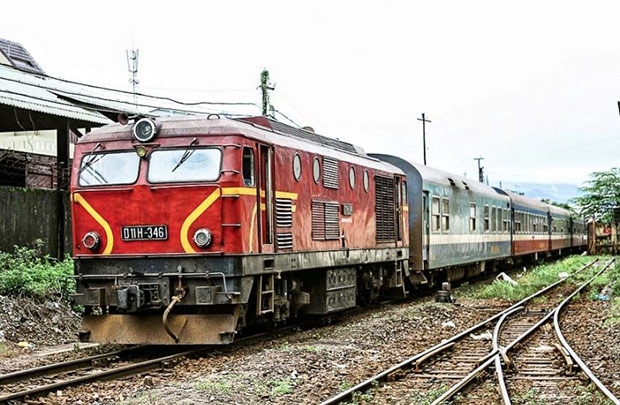|
Railway forgotten in the
last four decades of development
Outdated technology, monopolies and lack of competitiveness: they all describe Vietnam’s railway system.  According to the General Statistics office (GSO), in the first six months of 2017, passenger transport served 1.9 billion clients, an increase of 9.3 percent over the same period last year. Of these, 1.8 billion passengers traveled by land, up by 9.6 percent, 3.3 million traveled by sea, up by 9.5 percent, and 21.2 million traveled by air, up by 9.8 percent.
Meanwhile,
rail transport only received 5 million passengers, down by 2.9 percent.
According to the Ministry of Transport (MOT), roads remain the most popular means of transport which serve 95.75 percent of total passengers, while air has 2.05 percent, railway 1.14 percent, domestic waterways 0.19 percent, and maritime 0.01 percent. While the number of passengers traveling by rail is on the decrease, the number of passengers traveling by land and air is on the rise. Vietnam Railway Corporation’s chair Vu Anh Minh admitted that passengers now are turning their back to rail because of the bad service quality. He said the locomotives and carriages have become outdated, which cannot satisfy passengers’ requirements. Meanwhile, passengers have many choices for trips, including budget flights which allow them to travel long distances at reasonable costs. Low investment has been blamed for the poor conditions of the railway industry. The capital allocated to railway development in the last 10 years just accounted for 3 percent of the total budget for transport infrastructure projects. Meanwhile, nearly 90 percent of capital has been poured into road development. As roads have been developing and railways cannot receive appropriate investments, the railway has lost its important role in the economy. Local newspapers have commented that the Hanoi-Lao Cai Highway has taken away 30 percent of the number of passengers from the western railway, and that the Hanoi-Hai Phong railway will be left idle once the highway is put into operation. The same thing will happen with the North-South railway once the North-South Highway is put into traffic. After 10 years of implementing the 2005 Railway Law, the railway industry has been lagging behind in technology, equipment and service quality. Analysts pointed out that the monopoly in the industry cannot attract investment from non-state economic sectors. La Ngoc Khue, former Deputy Minister of Transport, commented that losing the important role of the railroad is an ‘odd ending’ of the transport development period. In principle, the railway must be the cornerstone of a country because of its cargo transportation capacity. China, which considers the railway a major artery of the economy, now has 140,000km of railways, including 16,000km of high-speed rail, while Malaysia has 1,650km double electrified rail. Vietnam still has no double rail, while 85 percent is single-line built by the French 136 years ago.
VNN
|
Thứ Sáu, 6 tháng 10, 2017
Đăng ký:
Đăng Nhận xét (Atom)
Không có nhận xét nào:
Đăng nhận xét